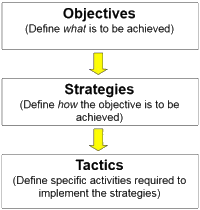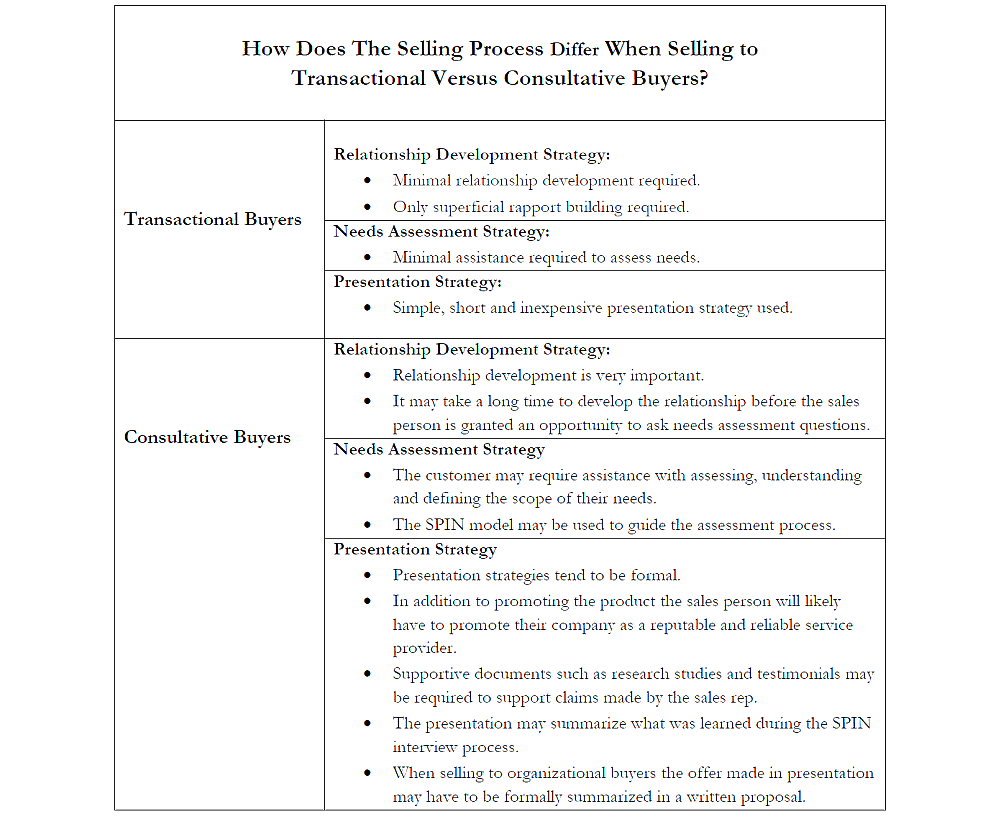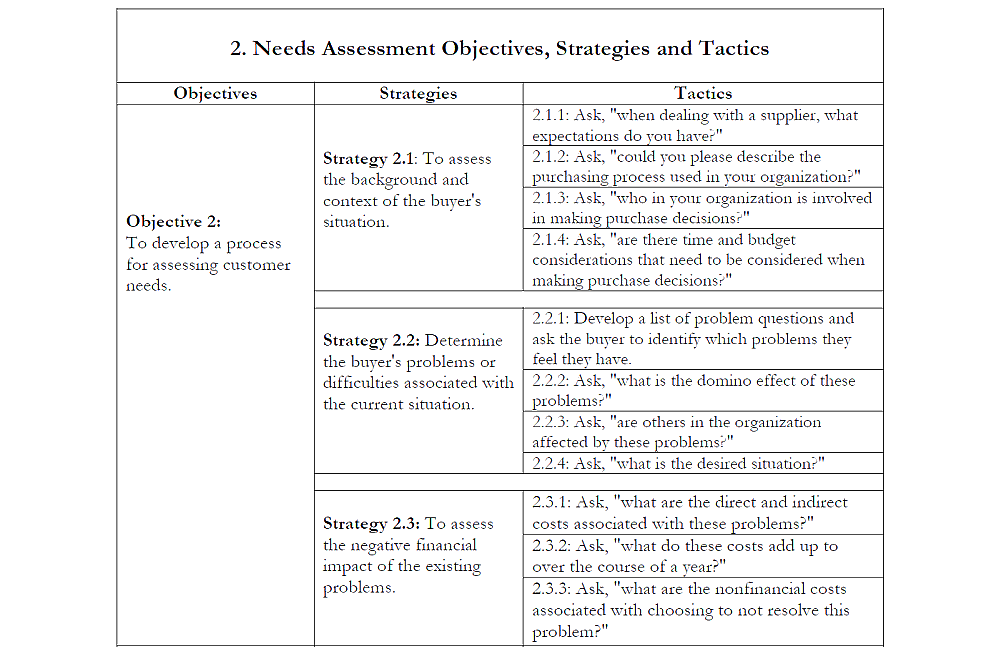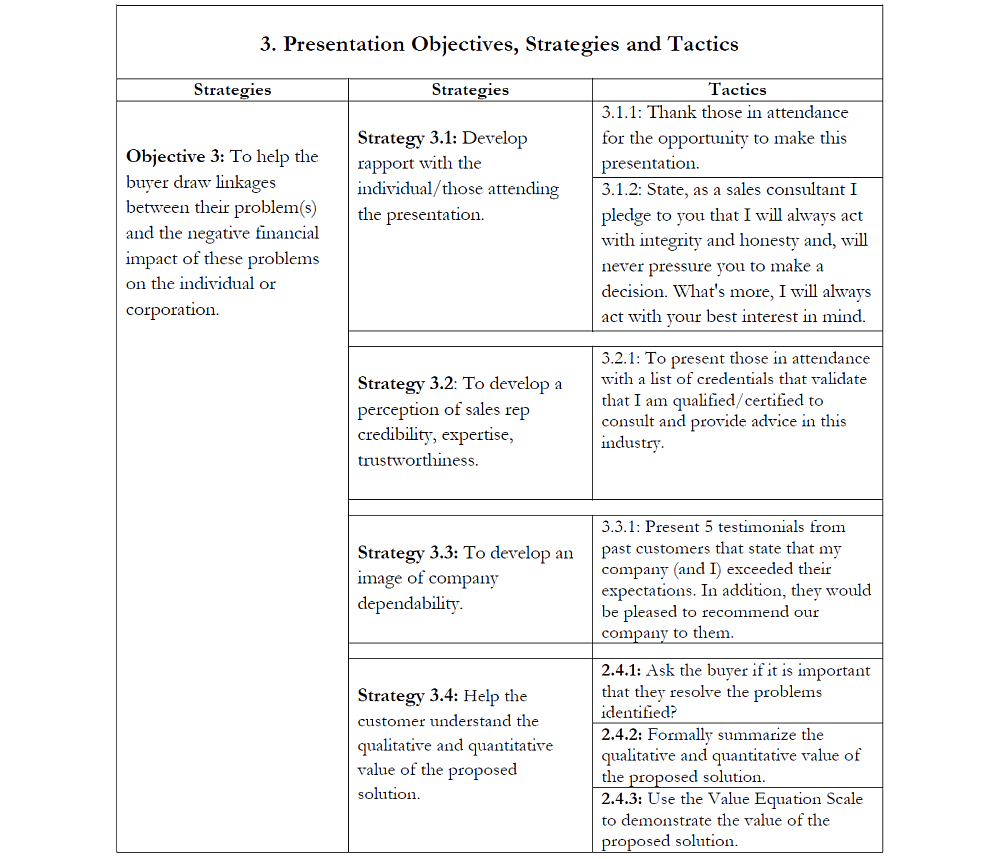Introduction
Imagine two people paddling a canoe. What would happen if the person in the bow was paddling forward and the person in the stern was paddling backward? Would this team of paddlers get very far? There is a small chance they might drift in the direction they want to go. However, the odds are they will expend a lot of effort and not move forward in the direction desired.
This analogy illustrates that when forces move against one another positive change is unlikely to occur. To move in a desired direction from one point to another there needs to be a controlled and coordinated effort. Many businesses experience the same problem. The manager wants to move in a direction that will improve organizational and sales performance. However, people are working independently of one another and, often in a counter-productive manner. The organization becomes like a rudderless canoe that drifts. The manager sees the destination where he or she would like to take the organization, but can’t seem to get everyone working in a coordinated manner that propels the organization forward.
The aim of this paper is introduce a strategic planning process known as Management by Objectives (MBO). Management by Objectives is a strategic planning process that defines the objectives the organization wishes to achieve and, the steps required to attain them. This article will also draw on the contributions of Manning et. al. (2006) and discuss the importance of creating relationship development, customer assessment, and presentation objectives, strategies and tactics.
What is the Difference Between Objectives, Strategies and Tactics?
As was previously mentioned, some organizations struggle to improve their organizational and sales performance. This is often a result of poor coordination of objectives, strategies and tactics.
Objectives are defined as, “outcomes the department wishes to meet.” Objectives state what is to be achieved, but not how. For example, a marketing department may state they have an objective to sell $1,000,000 of product in the upcoming year. A sales person may also state they have an objective to develop rapport. Both examples state the desired outcome (objective), but do not describe what needs to be done to achieve the outcome objective.
Strategies are plans of action that describe how the objective will be achieved. Strategies are more specific and detailed than objectives.
Tactics are specific activities that must be carried out to implement the strategies.
The following illustration shows the relationship between objectives, strategies and tactics.

While there are differences between objectives, strategies and tactics, at times it may be difficult to look at a statement and say “this statement is clearly an objective, whereas that statement is a strategy.” Objectives, strategies and tactics must be looked at in context and, in relation to one another. Strategies are always more specific than objectives and tactics are always more specific than strategies. Thus, when looking at a statement and asking if it is an objective, strategy or tactic, one needs to look at its relative position.
Developing Objectives, Strategies and Tactics at an Account Plan Level
An “account” is a customer. The customer can be a household consumer or an organization. Strategic planning at an account plan level involves creating objectives, strategies and tactics to develop and maintain relationships, assess customer needs and make sales presentations. Diagram 1 illustrates this process:

Developing Objectives, Strategies and Tactics to Develop and Maintain Customer Relationships
Why is it necessary to create relationship development and maintenance objectives? Customers often view sales people as dishonest and manipulative. Research conducted by John Tanner, Lawrence Chonko and George Dudley (2007) found that many sales people are guilty of the negative claims made against them.
Tanner and his colleagues studied the sales practices of 140,000 sales people from nine different countries. They discovered that Canadian sales people were the second worst when it came to stretching the truth about their products and services. The study found 53.2% of Canadian sales people and 57% of American sales people exaggerated the truth and made unsubstantiated claims about the products they sold. While not all sales people are dishonest, customers do not know how to differentiate between those who are honest and those who are dishonest.
To protect themselves from unscrupulous salespeople customers put up a psychological guard of distrust. When customer distrusts a sales person they will not believe the claims made and will not buy from that person. Thus, the objective of relationship development and maintenance strategic planning is to demonstrate that he or she is different from the dishonest sales people the customer may have encountered in the past and, that they can be trusted.
The following is an example of a relationship development objective and associated strategies to achieve the objective:
Objective 1: To develop and maintain positive customer relationships.
Strategy 1: To be accepted as an honest and trustworthy sales person.
Strategy 2: To be accepted as caring about the well-being of the customer.
Strategy 3: To develop an image of credibility.
It is important to note that not all customers want to develop relationships with sales people. In these cases the sales person will spend less time and money developing rapport with the customer and focus more on needs assessment and presentation objectives.
The following table shows examples of relationship development objectives, strategies and tactics:

Developing Customer Assessment Objectives, Strategies and Tactics
Customers buy to resolve problems and met unmet needs. The problem is, customers often have a poor understanding of the cause of the problem and how to resolve it. This is similar to when a patient goes to the doctor. The patient knows he is experiencing pain, but he may not be able to diagnose what the cause of the pain is or how to remedy the problem. Thus, doctors have methods to assess and diagnose patient problems. Once a diagnosis has been made the doctor can make a recommendation and prescribe a treatment plan. Like a doctor, sales people need to develop a process to assess or diagnose customer problems and unmet needs. A doctor does not use one assessment method to diagnose every medical condition. Nor should a sales person have only one method of assessment. Sales people need develop an assessment process that is appropriate for the industry they are in.
Neil Rackham (1988) has developed a selling process called SPIN Selling. The SPIN selling model provides a simple model that can be used as a starting point for developing an assessment strategy. This model teaches sales people to ask four types of diagnostic questions. These questions should be asked in the sequence presented below.
Situation Questions:
Situation questions are used to understand the background and context of the buyer’s present situation. For example,
- In your opinion, what are the characteristics of an excellent supplier?
- When dealing with a supplier what expectations do you have?
- Could you please describe the purchasing process used in your organization?
- Who in your company would be involved in making the purchasing decision?
- Are there time and budget considerations that need to be considered?
There are numerous situation questions that could be asked. Neil Rackham (1988) states that customers can easily become annoyed with too many situation questions because they do not benefit the buyer, they benefit the seller. Therefore, one should try to answer situation questions through alternative means first and then, ask the buyer only the questions that remain unanswered.
Problem Questions:
Problem questions are asked so that the buyer reveals “implied” needs and to determine problems, difficulties or dissatisfactions created by the existing situation. Problem questions are normally expressed in qualitative or nonfinancial terms. Examples of problem questions include:
- How long have you been experiencing this problem?
- What is the domino effect of this problem? Are others in the organization affected by this problem?
- What is the desired situation?
Implication Questions:
Implication questions are asked to determine the negative impact on the customer or company. When selling to organizational buyers, implication questions are aimed at quantifying the financial cost of continuing to live with the problem. Though less effective, implication questions can also be asked to uncover qualitative problems; that is, problems that you cannot directly assign a financial cost to. For example, a manufacturer may be using a piece of equipment that is noisy. The noise may be irritating, but there may not be a financial cost associated with having a noisy piece of equipment. Need pay-off questions explicitly define the positive value or usefulness of the proposed solution. Need pay-off questions are designed to assess whether the customer agrees with the solution or treatment plan being offered by the salesperson. When selling to an organizational buyer need pay-off questions should be expressed in financial (quantitative) terms and should demonstrate how the cost of the solution is less than the cost of continuing to live with the problem. If the previous problem questions were qualitative in nature (i.e. problem with noisy equipment), the need pay-off questions will most likely be qualitative in nature. For example, the benefit of buying quieter equipment may be fewer headaches.

Developing Presentation Objectives, Strategies and Tactics
In many sales situations there is no formal sales presentation. Rather, the sales presentation occurs informally and indirectly when the Implication and Need Pay-off questions are being asked. On other occasions a formal presentation to an individual or a committee is required. A formal sales presentation can help the customer draw linkages between their situation, the problems created by the situation and, the negative financial impact on the person or company, The second reason sales presentation objectives are important is because there may be new people (i.e. managers, buyers) at the presentation that do not have a clear understanding of the situation, associated problems and the negative impact of the problem on the person or company. Thus, sales objectives can be developed to ensure that all members present have a clear understanding of the problems and solutions. An example of a sales presentation objective is: “To help the consumer draw linkages between their situation, the problem created by the situation and the negative financial impact the problem has on their organization.”
The following are strategies that may be used to achieve the above mentioned objective.
Objective 1: To develop rapport with the audience.
Objective 2: To cultivate an image of sales person expertise, credibility and trustworthiness.
Objective 4: To develop the belief that the product/service being offered will meet the customer’s unmet needs or resolve the existing problem.
Objective 5: To demonstrate that the cost of the solution (product/service) is less than the cost of continuing to live with the problem.
The five objectives listed above is not an exhaustive list. They are presented to you as examples of presentation objectives. The following diagram provides an example of how strategies and tactics can be developed for Objective 5. Note that “Need Payoff” is the last type of diagnostic question in the SPIN selling model. The following diagram provides an example of how strategies and tactics can be developed for Objective 5.

Summary
This paper began by stating that organizations often fail to progress in a desired direction due to misaligned objectives between the marketing, promotions and sales departments. A strategic planning process called Management by Objectives was presented as a method that helps coordinate objectives between departments.
The second part of this paper looked at how sales people can develop a strategic plan at an account plan level. Account plan objectives need to be aligned with the objectives, strategies and tactics of the sales department. At an account plan level sales people need to develop objectives, strategies and tactics to develop relationships, to assess customer needs and make sales presentations.
References
Manning, Gerald L., Reece, Barry L., MacKenzie, Herb. (2006) Selling Today. Fourth Canadian Edition, Pearson Prentice Hall. (Chapter 1 Personal Selling Today; Introduction and Overview. pp. 4 – 28).
Peter F. Drucker: A Biography in Progress. Retrieved March 15, 2007 from http://www.peterdrucker.at/en/bio/bio_start.html.
Rackham, Neil. (1988) SPIN Selling. McGraw-Hill Inc. (Chapter 4 The SPIN Strategy pp. 67-98.)
Spiro, Rosann L, Stanton, William J, Rich, Gregory A. (2008) Management of a Sales Force. 12th Edition, McGraw-Hill Irwin. (Chapter 2).
Tanner, John F. Jr., Chonko, Lawrence B., Dudley, George W. (2007), Stretching the Truth: Exaggeration Practices of Sales Representatives. Proceedings, 2007 National Sales Conference in Sales Management, Irvine California. Behavioral Sciences Research Press. March 29-31, 2007.